FPGAs used in data centers, image processing, communication equipment, etc. are rapidly improving in performance, and new devices are being introduced to the market one after another. As a result, low voltage and large current are required for power supplies for FPGAs, and the reality is that design is becoming more difficult.
Under these circumstances, module-type power supply ICs are attracting attention. On the other hand, if you are not yet familiar with power supply design, you may be wondering, "I don't know what advantages there are over discrete power supplies when using them as power supplies for FPGAs."
Therefore, this time, I will explain the requirements that you need to know in FPGA power supply design for those who design the power supply circuit of FPGA. Introducing the Micro Module Regulator. Please read to the end.
What is required for the power supply in FPGA design?
As FPGA current increases, what are the requirements for FPGA power supplies?
There are four main points:
<Requirements for power supply for FPGA >
(1) Space saving
(2) High accuracy and thermal efficiency
(3) Long-term supply
(4) Design flexibility
Let's explain in order.
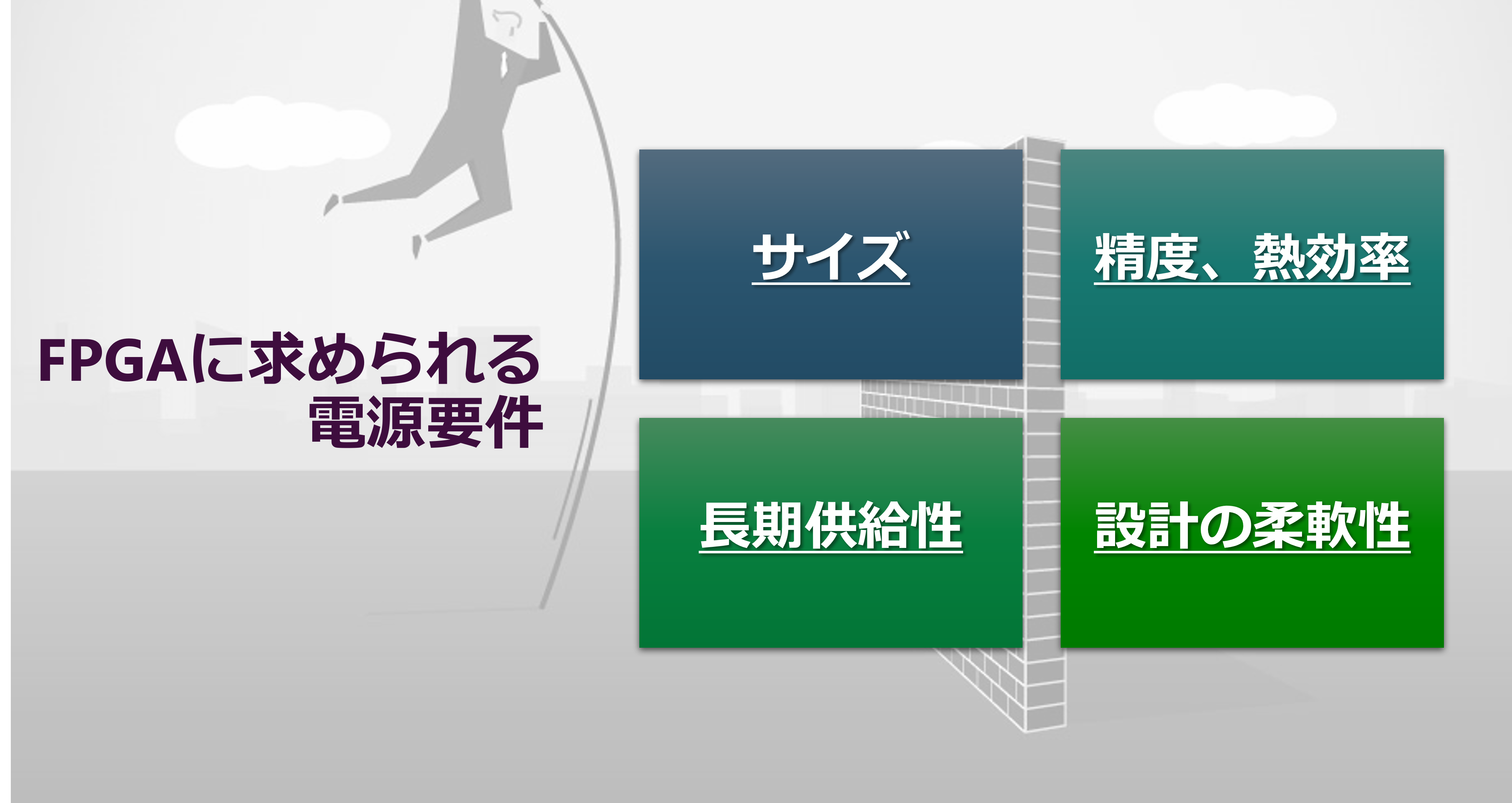
(1) Space saving
In many cases, the space for the power supply circuit is limited according to the size of the final product that has been decided in advance. It's a challenge. In particular, FPGAs have many voltage systems, and the circuit scale tends to be large, so the design tends to be difficult.
Furthermore, since multilayer boards on which FPGAs are mounted are expensive, miniaturization is also required from the perspective of "wanting to reduce board costs as much as possible."
(2) High accuracy and thermal efficiency
The latest FPGAs require strict current and precision requirements, and we hear from designers that it is difficult to output large currents with high precision.
Also, as the power consumption of the FPGA increases, the amount of heat generated by the IC also increases. We have to avoid the situation where the circuit board heats up too much and the product cannot be commercialized, even though it should have been designed perfectly. The accuracy and efficiency of the ICs used greatly affect the power supply design.
(3) Long-term supply
Since FPGA peripheral circuits are very difficult to design, it is only natural to want to continue mass-producing boards that have been made as much as possible. If a part is discontinued, it will take a lot of time and effort to redesign it, so it is necessary to consider the long-term availability of the part. It is also important to reduce the number of parts as much as possible to reduce the complexity of parts management and the risk of discontinuation of production.
(4) Design flexibility
Switching regulators have many parts and a complex layout, so designing them takes time and requires know-how. Inadequately verified layouts can lead to destruction due to overvoltage (EOS), but in recent years, priority has been given to bringing products to market early, and it has become commonplace to not have enough verification time.
Also, when incorporating the latest FPGA in advance, the required specifications may change during the power supply design. Since the amount of current required depends on the task to be executed by the FPGA, a shortage of current may be discovered just before the delivery date.
It's not uncommon for us to have to deal with rework in a hurry when we don't have time to spare. Flexibility is required in the design to quickly respond to various situations.
What is the optimal power supply IC "μModule® regulator" for FPGA?
What kind of power supply IC is most suitable for the power supply of FPGA, which has many requirements like this?
The answer is the μModule® (micro module) regulator series of power supply modules provided by Analog Devices. It is a one-chip DC/DC converter solution that integrates a high-precision analog IC and peripheral circuits into a single package, and has a lineup that supports a wide range of power supplies.
Each component, including peripheral circuits, is mounted in a small package with a wiring layout close to the ideal, achieving low noise. Even if you do not have circuit design know-how, you can easily develop a high-quality FPGA power supply without worrying about the layout of detailed parts.
μModule® regulators contribute to miniaturization of power supply circuits, drastic reduction in design man-hours, and reduction in the number of parts.
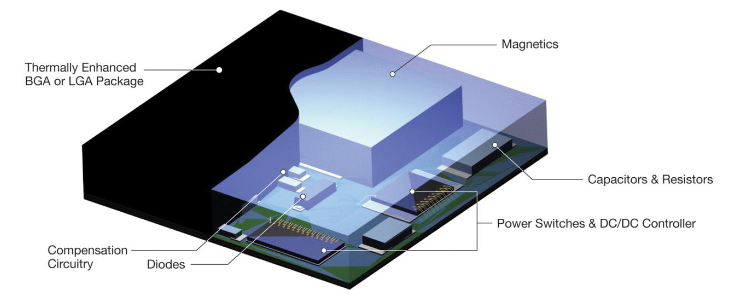
Features and Functions of “μModule® Regulator”
What are the specific features of Analog Devices μModule® regulators?
The main five are:
<Features of µModule® regulator>
・Compact size
・High efficiency
・High accuracy
・High scalability
・Long-term supply without discontinuation of production
Let's take a closer look.
compact size
μModule® regulators achieve a small package while supporting large currents.
For example, the ultra-small package "LTM4624" is 6.25 mm x 6.25 mm x 5.01 mm, including peripheral components such as inductors, and can drive up to 4 A. The board area can be reduced by about 70 % compared to configuring a discrete power supply of the same scale. Compared to other companies' modules, we have products with a large amount of current per area.

high efficiency
One of the attractions of µModule® regulators is that there are many products that achieve high efficiency.
For example, the LTM4681 with a rated current of 125A features a high efficiency of 90 %, which is an excellent value when compared with other modules. Since heat generation can be suppressed even with large currents, it is ideal as a power supply for FPGAs, whose power consumption is increasing year by year.
high scalability
A number of unique μModule® regulator features that enable flexible design are implemented, as listed below, with high scalability.
<Current share function>
This is a function that distributes the output to one voltage system to multiple modules placed in parallel.
It can disperse heat generation, so you can easily solve the heat problem of the board.
[Usage example]
・By bundling multiple outputs, a large power supply that cannot be realized with a single module can be constructed.
- Redundancy can be achieved by distributing the power supply.
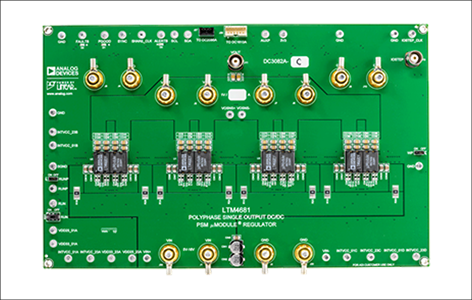
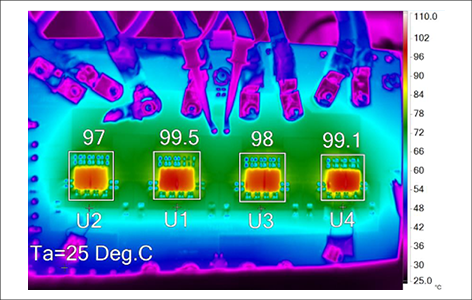
<Multi-output>
In addition to supplying a single power supply from a single module, we have a lineup of products that can output multiple channels such as 2 systems and 4 systems.
[Usage example]
・Because one module can supply power to multiple voltage systems, you can achieve overwhelming space savings and greatly reduce the number of parts.
・Circuits can be configured by flexibly bundling multiple output systems.
For example, the quad-channel (4 lines) "LTM4644" can support from "4 lines of 4A output" to "single 16A output" with one module.
・It is also convenient to have redundancy, such as "use it as a spare, if it runs out". Flexibility is improved, making it easier to respond to sudden changes in specifications.

[Design example: Xilinx Kintex UltraScale PCI Express Platform]
Even with multiple voltage systems including large currents such as "0.95V 26A" and "1V 16A", it is possible to realize a space-saving and neat circuit while reducing the number of parts.
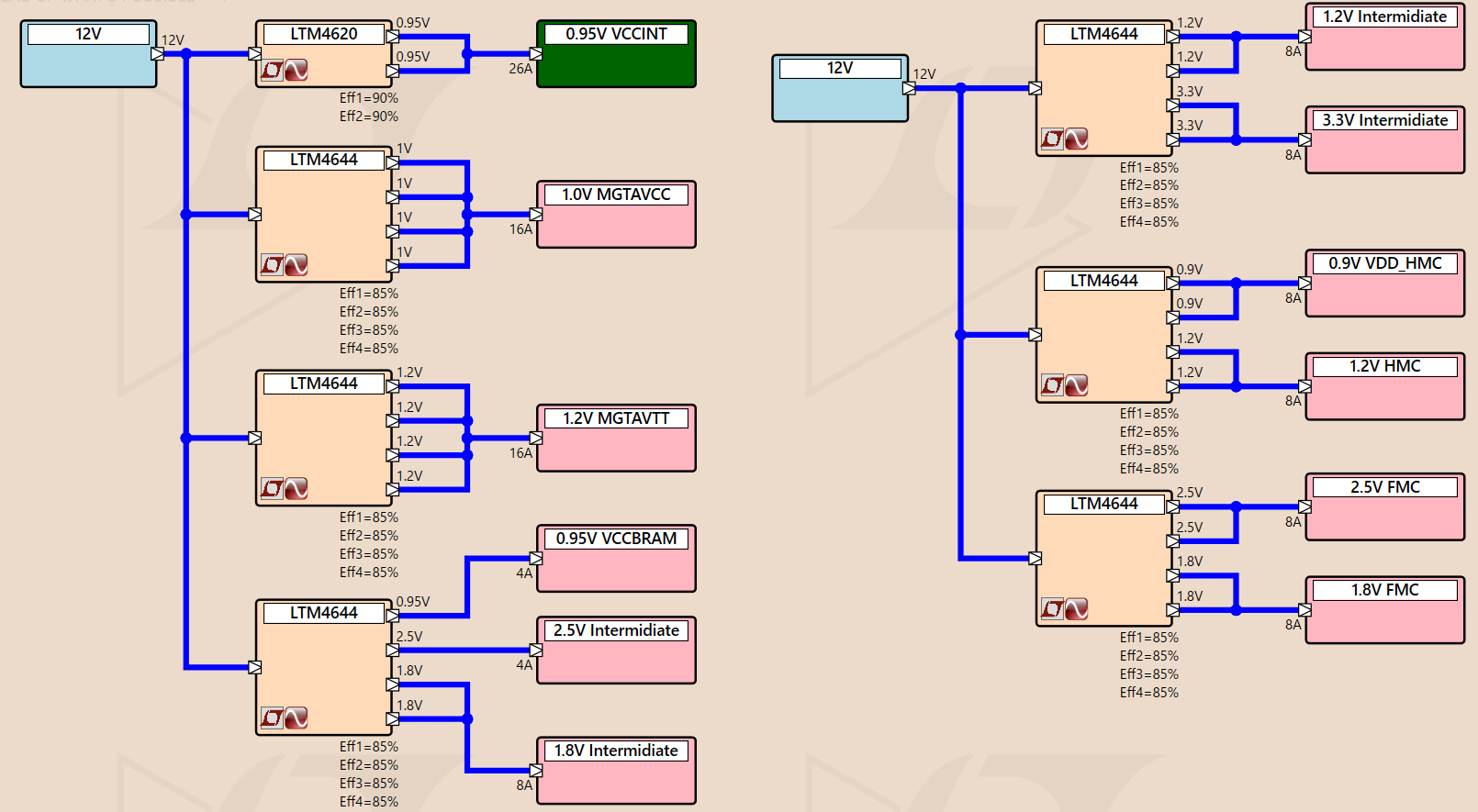
<Pin compatible>
We offer a pin-compatible lineup that has nearly the same input voltage, output voltage, and package size, and supports a variety of output current values. You can easily respond to specification changes and cost optimization by replacing only parts without changing the circuit itself. With a rich lineup, you can freely select the most suitable module and proceed with the design as you wish.
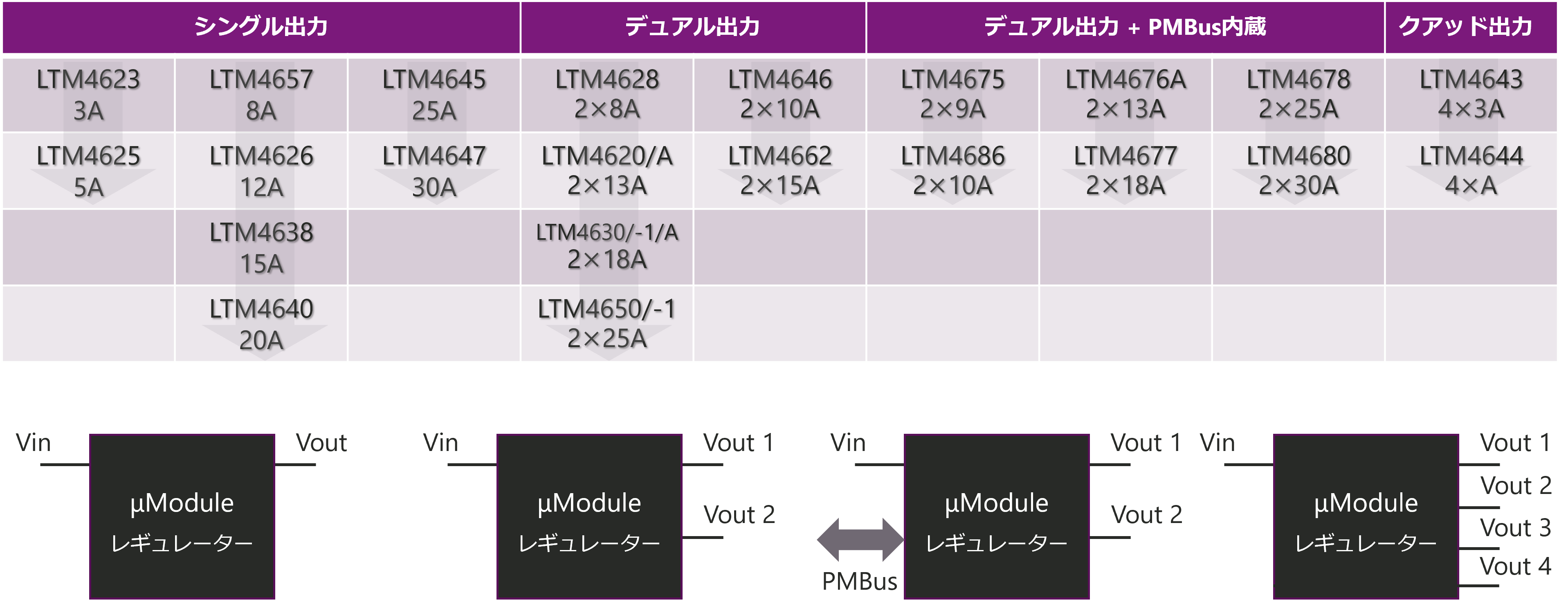
<Long-term supply without discontinuation>
μModule® regulators are provided while inheriting the policy of the former Linear Technology Corporation, "In principle, we will not discontinue production of products."
The fact that it can be used stably for FPGAs with a high design load without worrying about discontinuation of production is not written in the specifications, but it will bring tremendous value.
μModule® regulator lineup introduction
There are three types of µModule® regulators for each number of outputs that can be output.
・Single channel: Output from one module to one voltage system
・Dual channel: Output to two voltage systems from one module
・Quad channel: Output to 4 voltage systems from 1 module
Dual channel and quad channel can be used by bundling the output voltage.
Each of the three types has a rich lineup.
single channel
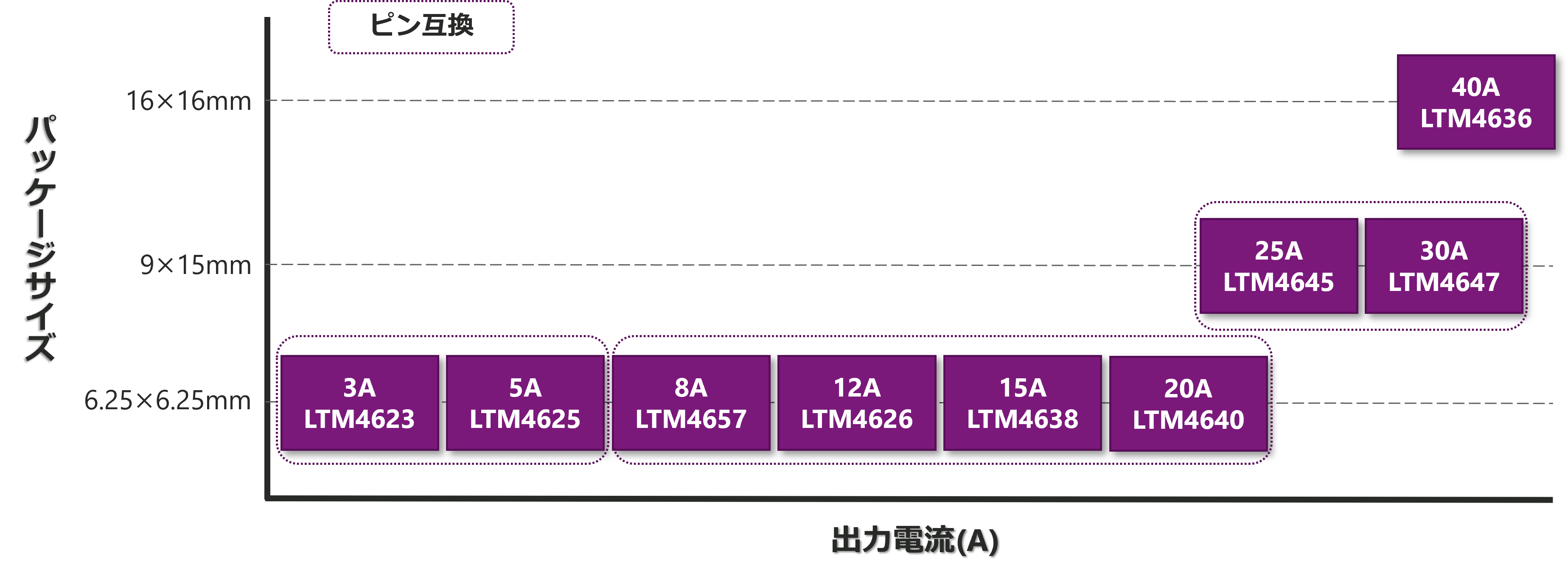
dual channel
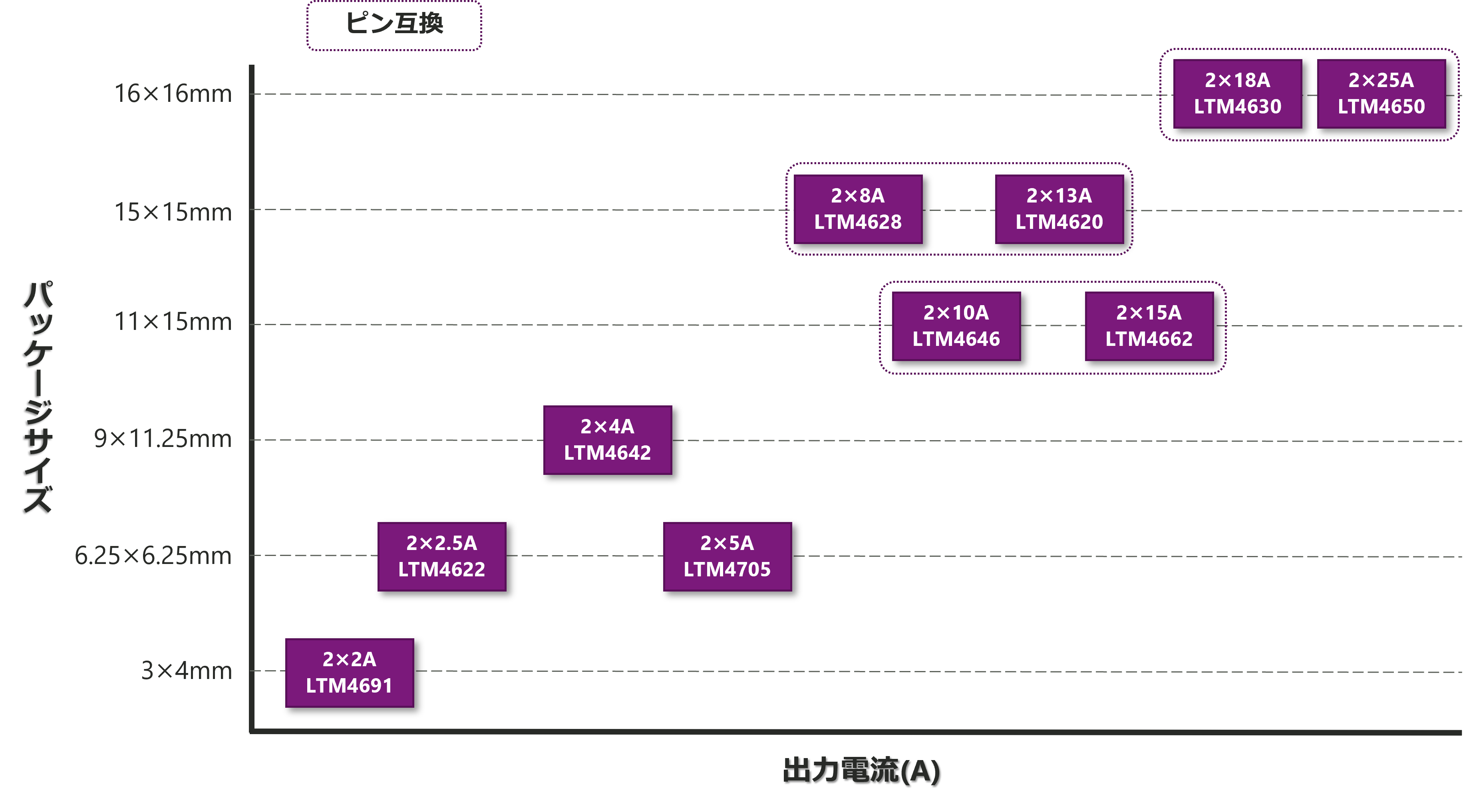
quad channel
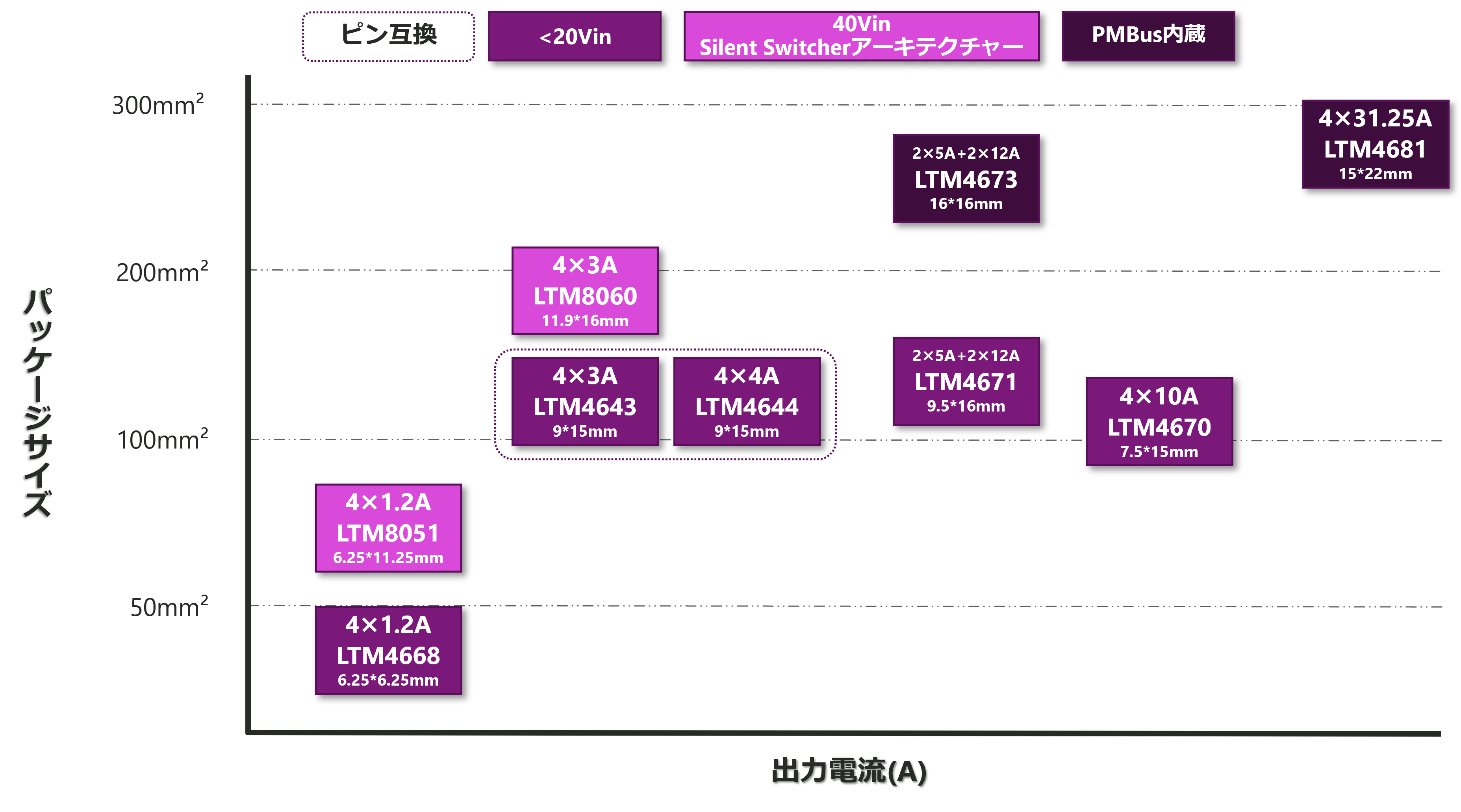
Analog Devices Reference Power Guide for Intel® FPGAs
Macnica For the FPGAs we offer at Intel Corporation, our power supply specialists have carefully selected a selection of products from Analog Devices, Inc. to provide a reference power supply guide. The Reference Power Supply Guide includes recommended devices for each FPGA series as well as the order in which the power supplies meet specified sequencing requirements during startup and shutdown.
The Reference Power Supply Guide can be downloaded free of charge by providing your information. If you are planning to design a power supply using FPGAs from Intel Corporation, or if you need help selecting components for power supply ICs in FPGAs, we encourage you to take advantage of this guide.
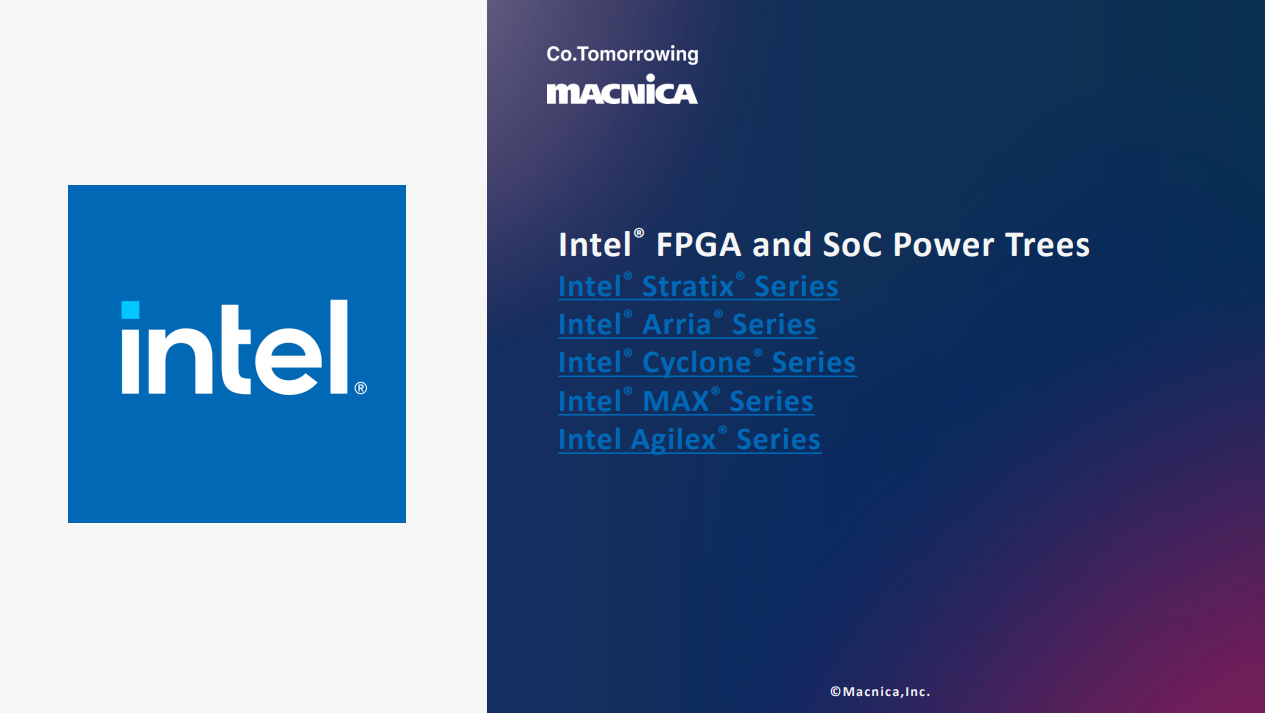

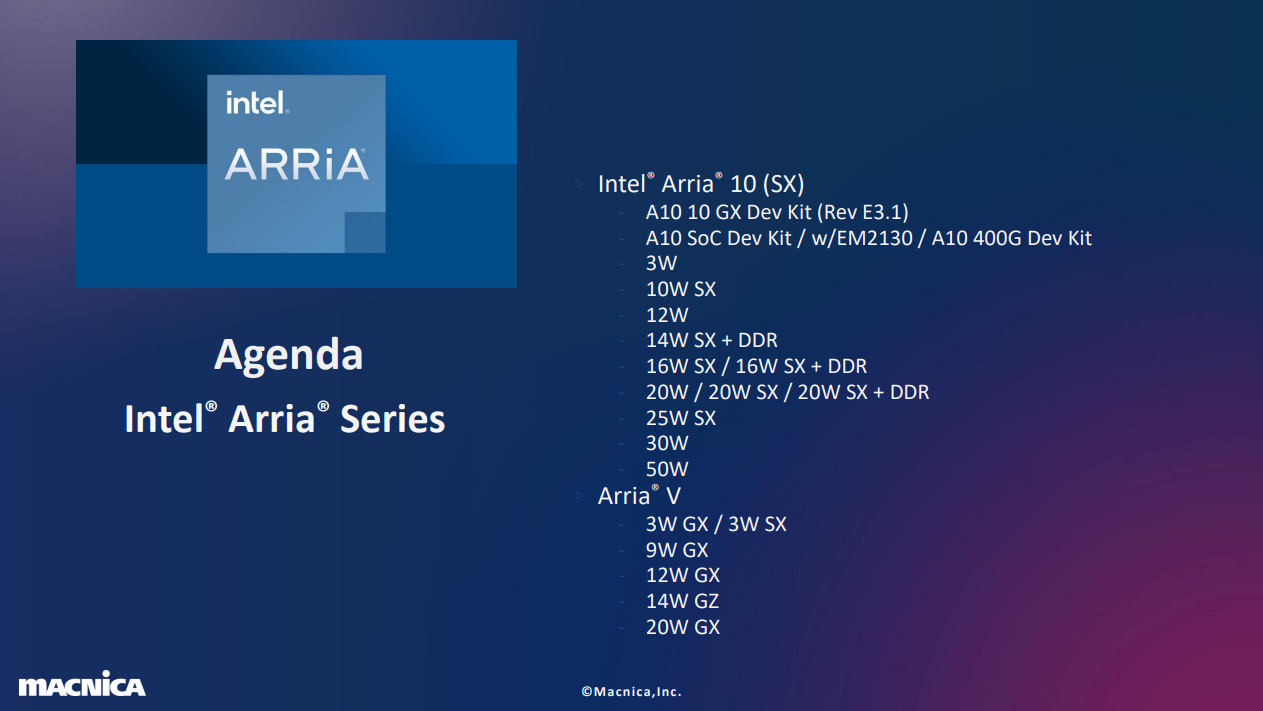

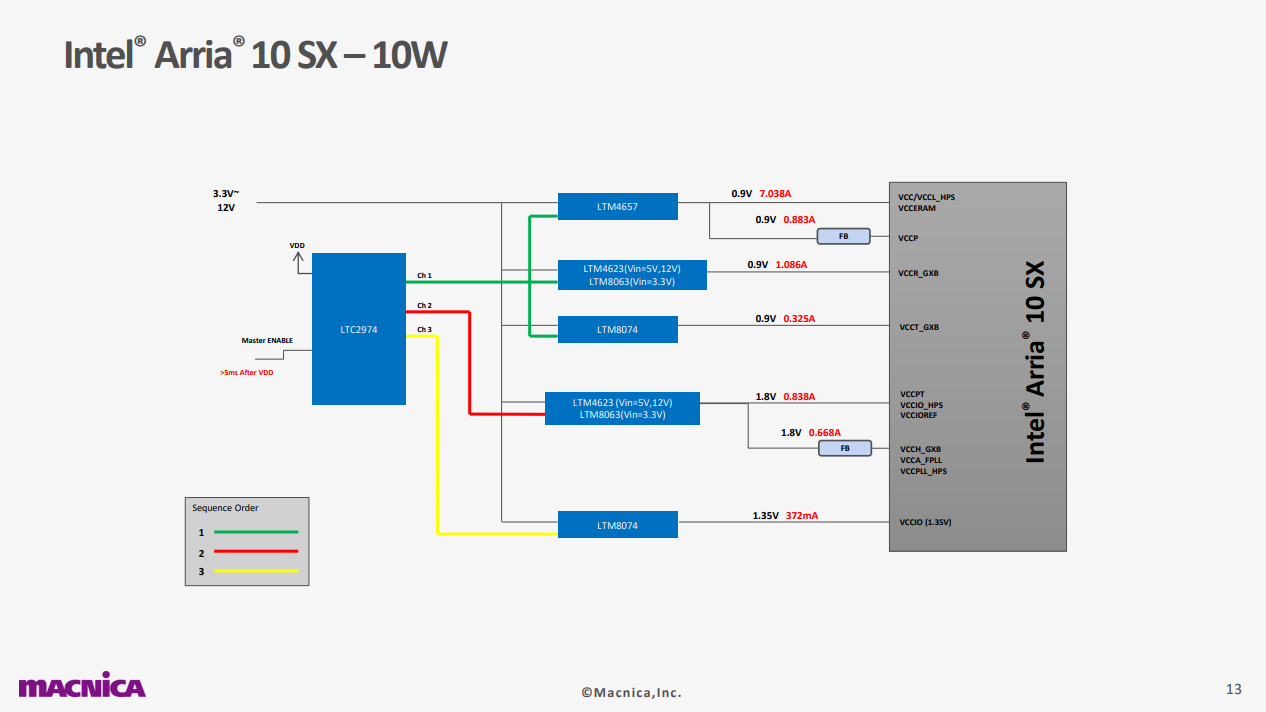

Application example
・Data center
・Communication equipment
・Image processing equipment


This article introduced Analog Devices μModule® regulators that are ideal for powering FPGAs.
µModule® regulators allow you to quickly design small FPGA power supplies that can handle high currents. Please consider adding it to your list of candidates.
If you are interested, please feel free to contact Macnica.
Click here to purchase products
Click here for manufacturer site/other related links
- μModule (micro module) (Various data can be downloaded from here)
- Solve analog circuit problems with μModule®!
- Records system abnormalities caused by power circuits
- Clears CISPR25 Class5 requirements! Switching regulator that facilitates noise design for automotive ECUs
- Power supply module (μModule®) replaceable from Enpirion
Inquiry
If you have any questions regarding this article, please contact us below.
Analog Devices Manufacturer Information Top
If you want to return to Analog Devices Manufacturer Information Top, please click the button below.
What is the recommended power supply IC for FPGA power supply?
What are the advantages of power supply modules in FPGA power supply design compared to discrete switching power supplies? Learn about FPGA power supply requirements and why Analog Devices μModule® regulators are the best choice.
